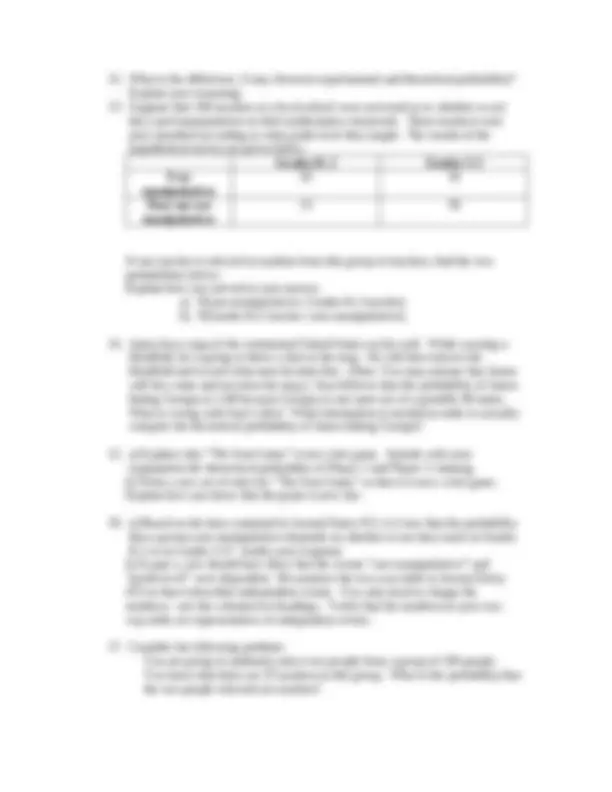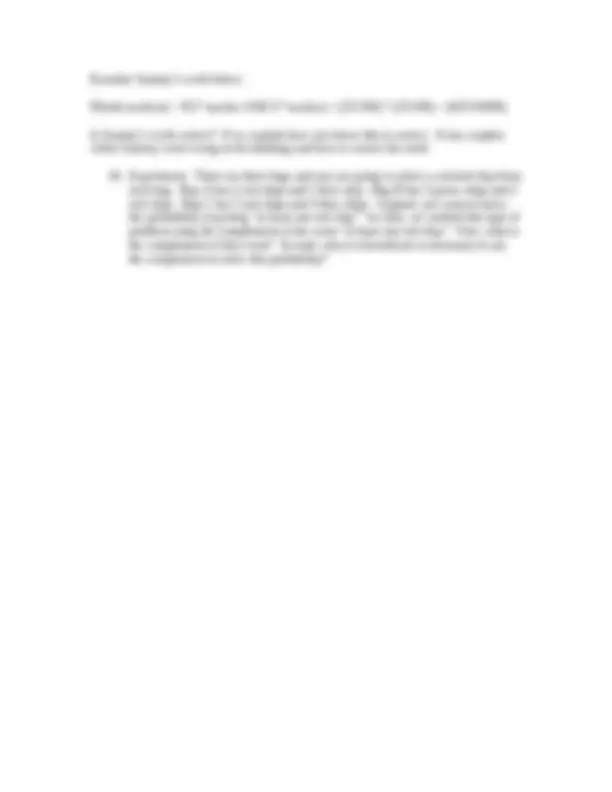




Study with the several resources on Docsity

Earn points by helping other students or get them with a premium plan


Prepare for your exams
Study with the several resources on Docsity

Earn points to download
Earn points by helping other students or get them with a premium plan
Community
Ask the community for help and clear up your study doubts
Discover the best universities in your country according to Docsity users
Free resources
Download our free guides on studying techniques, anxiety management strategies, and thesis advice from Docsity tutors
Various journal entry tasks related to probability and statistics. Students are required to write thorough responses to the given tasks, which involve analyzing the effectiveness of fathom technology in teaching statistics, identifying variables and observational units, creating graphs and stemplots, interpreting data, and solving problems using snap-cubes and the leveling-off procedure. Additionally, students will explore concepts such as mean, median, standard deviation, association between variables, and compound events.
Typology: Study notes
1 / 4

This page cannot be seen from the preview
Don't miss anything!



Probability and Statistics Journal Entries
Examine Sammy’s work below: P(both teachers) = P(1st^ teacher AND 2nd^ teacher) = (25/100) * (25/100) = (625/10000) Is Sammy’s work correct? If so, explain how you know this is correct. If not, explain where Sammy went wrong in his thinking and how to correct his work.